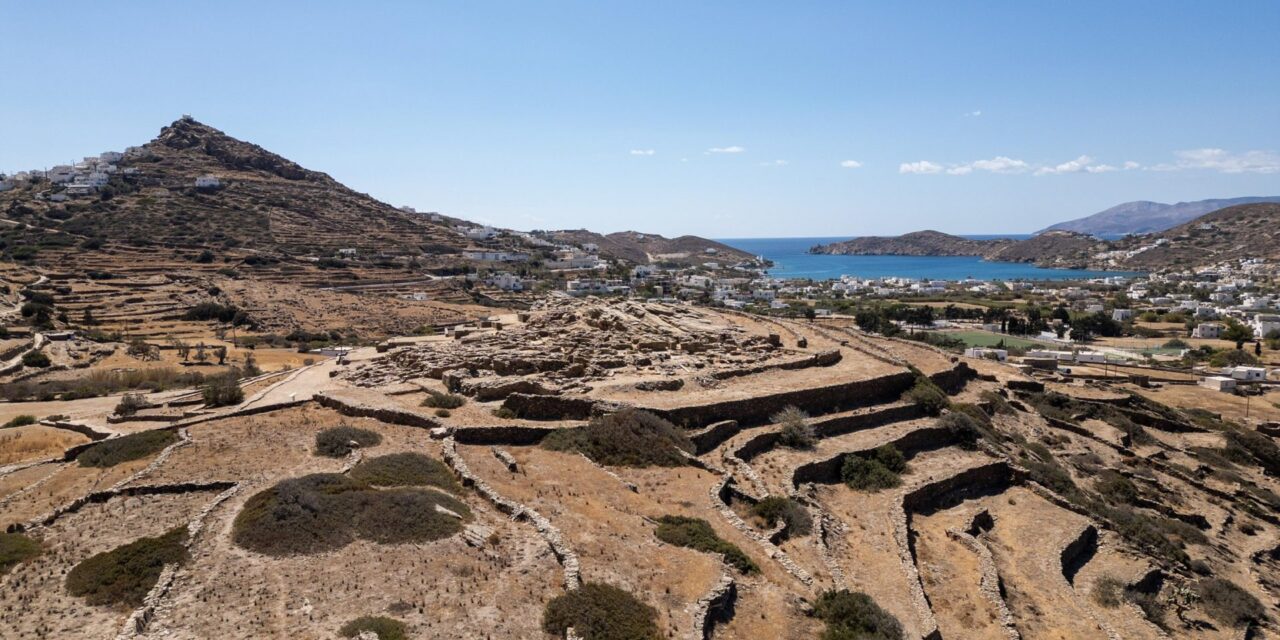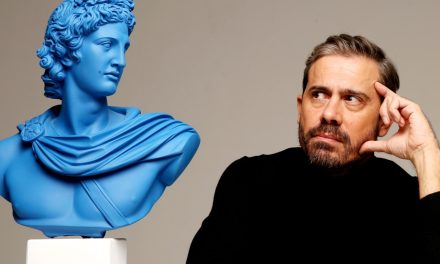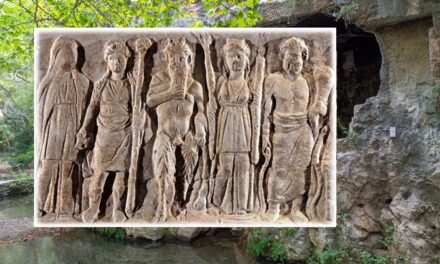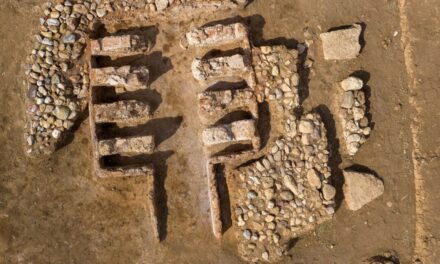Skarkos, on the Aegean island of Ios, is the largest, most important and best preserved Early Bronze Cycladic settlement known to date. A temporary exhibition titled “Cycladic Nexus – A Journey of Connections Across Time: Skarkos”, hosted at the Archaeological Museum of Ios (28.6-31.10.2025), aims to create a dialogue between contemporary art and the dynamic of the ancient Cycladic community of Skarkos, and by extension, the Cycladic civilization.
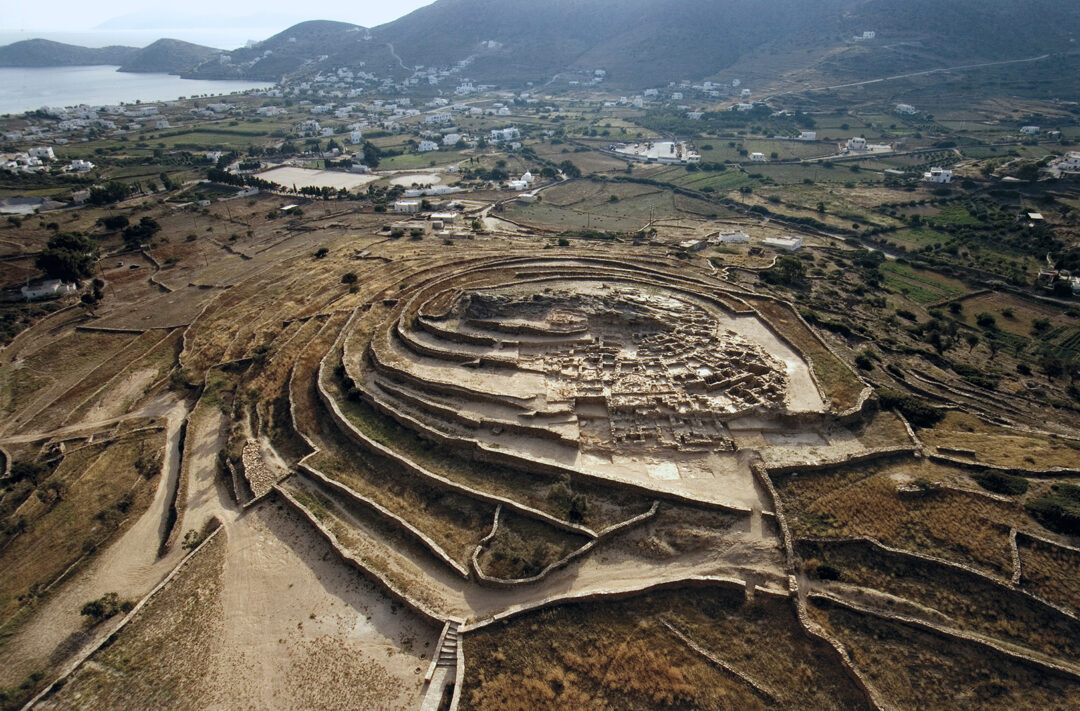
The hill of Skarkos, featuring the Early Cycladic II settlement, overlooks the Lower Plain and the port of Ios from the east. Discoveries at Skarkos of raw materials and finished products imported to Ios from other Cycladic islands, mainland Greece, and other parts of the Aegean indicate that the settlement played an active role in the maritime trade of the period. (cyclades.culture.gov.gr )
Skarkos hill occupies a privileged geographic position in the middle of the western side of Ios, where one of the most spacious and safe natural harbors of the Cyclades coexists with one of the island’s largest arable lands, the Lower Plain (cover photo: www.presidency.gr). Human presence at Skarkos was continuous from at least the Early Cycladic I period (3200 to 2800 BCE) through to late antiquity. However, the architectural remains dominating the hill belong to a large, flourishing settlement dating from the period of significant development and outward expansion of the Early Cycladic world, known as the Early Cycladic II period or the cultural unity of Keros-Syros (2700 to 2400/2300 BCE). This major settlement has been preserved in an exceptional state of conservation, providing a comprehensive picture of Cycladic societies of the mid-3rd millennium BCE, which were previously known mainly from cemetery finds, often looted. (Dr. Mariza Marthari, director of the Skarkos excavation, cyclades.culture.gov.gr, odysseus.culture.gr)
The site of Skarkos has been systematically excavated between 2002 and 2007. The project was honored with the 2008 EU Prize for Cultural Heritage / Europa Nostra Top Prize for Conservation, recognized for the outstanding quality of conservation work and, above all, for the minimal and extremely sensitive nature of the interventions, which caused no detrimental impact on this unique landscape.
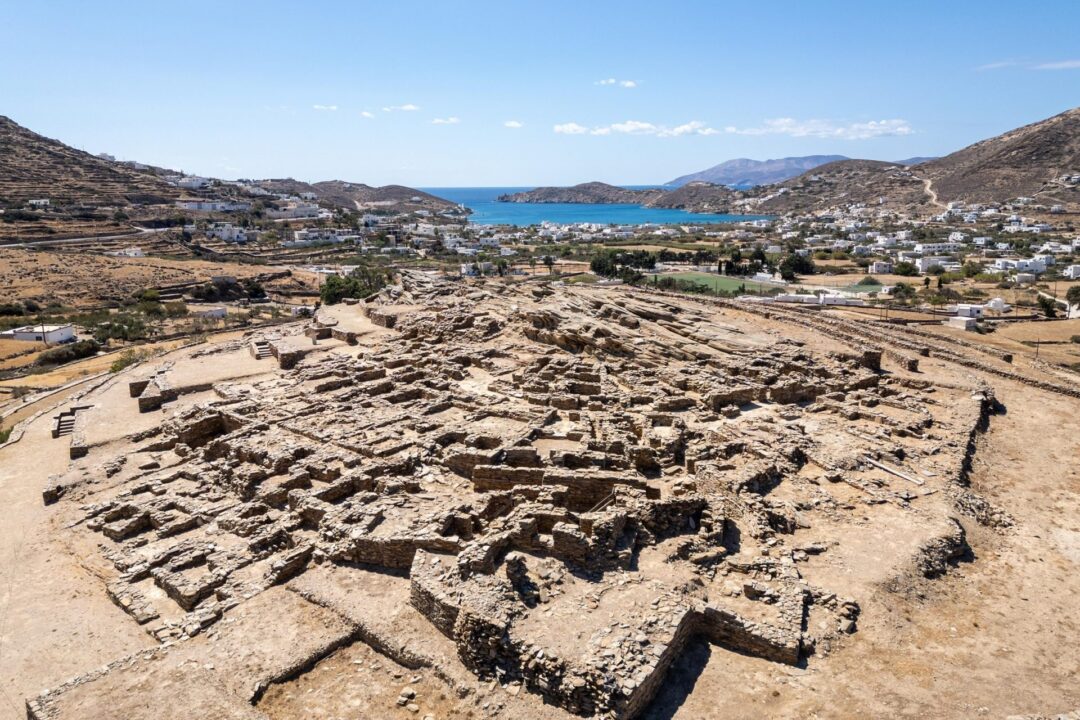
The settlement of Skarkos is organized around the hilltop and features a drainage system for the removal of rainwater. The dense urban fabric develops along two main central roads, each up to 2 meters wide, which encircle the summit of the hill and periodically widen to form small or larger open spaces. Short roads, perpendicular to these main arteries, connect the foothills to the hilltop and vice versa. The road network incorporates building blocks, each comprising between two and eight structures. (Source: cyclades.culture.gov.gr , photo www.presidency.gr)
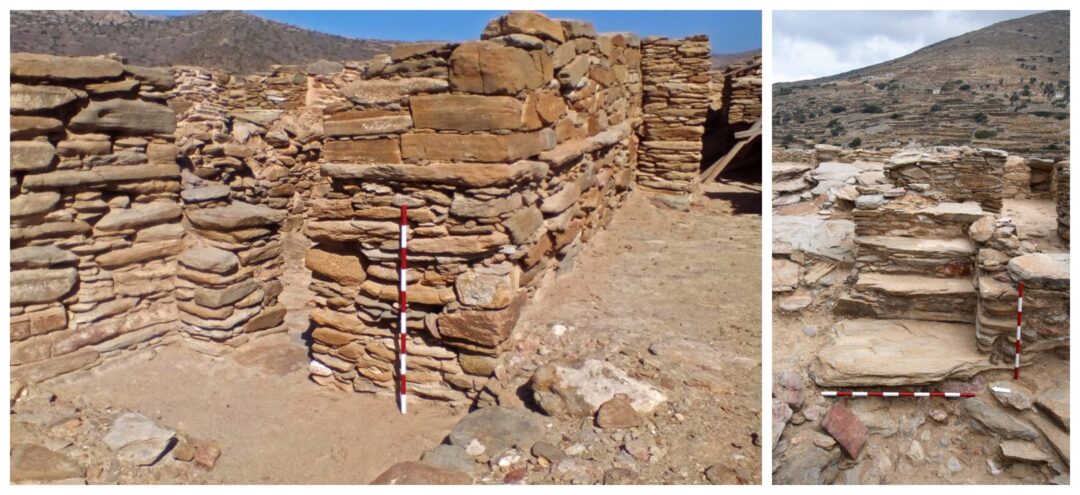
Skarkos, Early Cycladic II settlement: the entrance of Building B (left) and the external staircase of Building D (right). To date, 55 buildings have been uncovered, most of which are impressive two-story structures featuring spacious entrances, stone-built staircases, paved upper floors, built-in wall cupboards, and chests made from schist slabs. These buildings are primarily private residences and exhibit remarkable similarities in their internal layout and use of space. However, one building, known as the Building of the Figurines, has been excavated with a different primary function: it served as a workshop. This building housed a marble carving workshop where figurines and vessels were crafted from local white and blue marble (cyclades.culture.gov.gr )
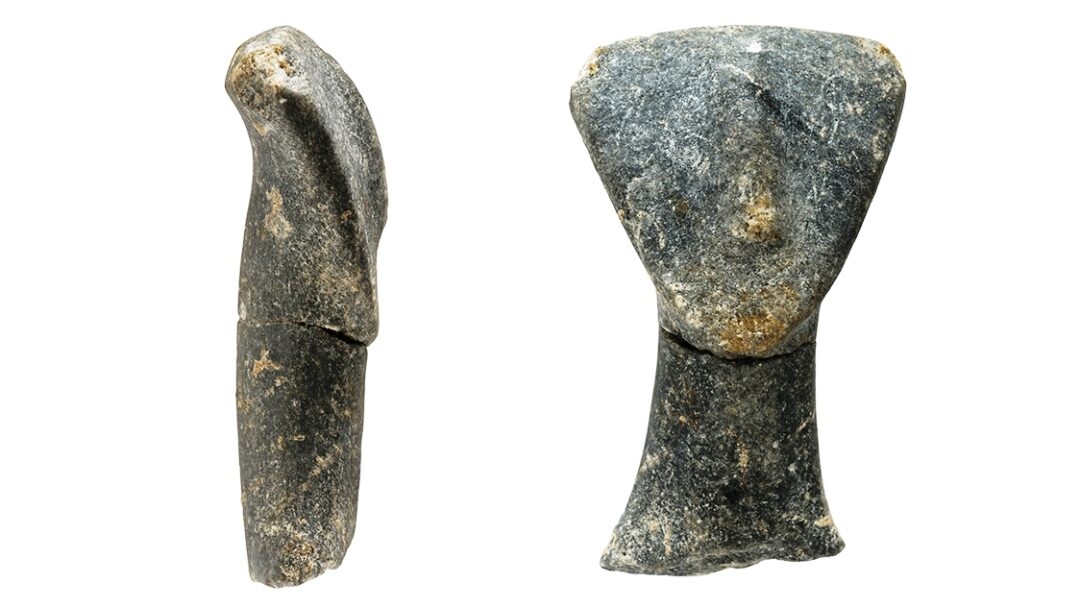
Skarkos, Early Cycladic II settlement: Figurine made of blue marble, Archaeological Museum of Ios (cyclades.culture.gov.gr)
The movable finds, like the buildings, reflect a relatively advanced lifestyle for the southern Aegean in the 3rd millennium BCE. There is an abundance of clay tableware, storage containers, and cooking vessels. Stone vessels and tools also appear in great variety. Additionally, mainly schematic marble figurines have been identified, along with objects made of metal, bone, and clay. Movable finds from Skarkos are on display at the Archaeological Museum of Ios.
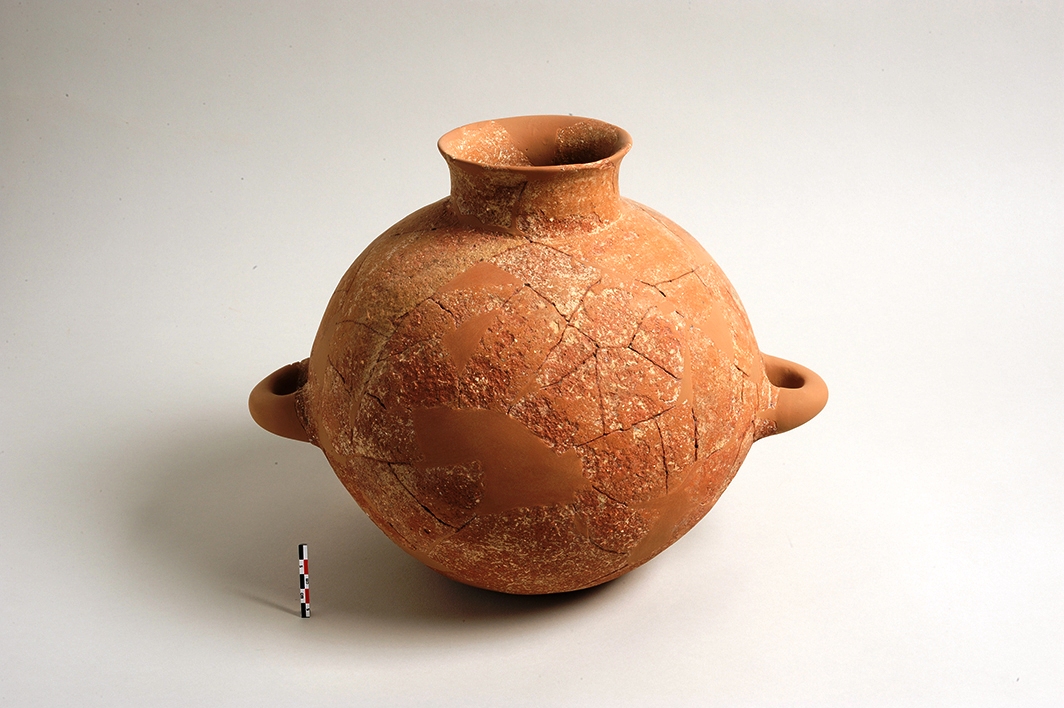

Skarkos, Early Cycladic II settlement: Local amphora (upper), Bowls of the Urfirnis ceramic category, imported to Ios (lower), Archaeological Museum of Ios (cyclades.culture.gov.gr)
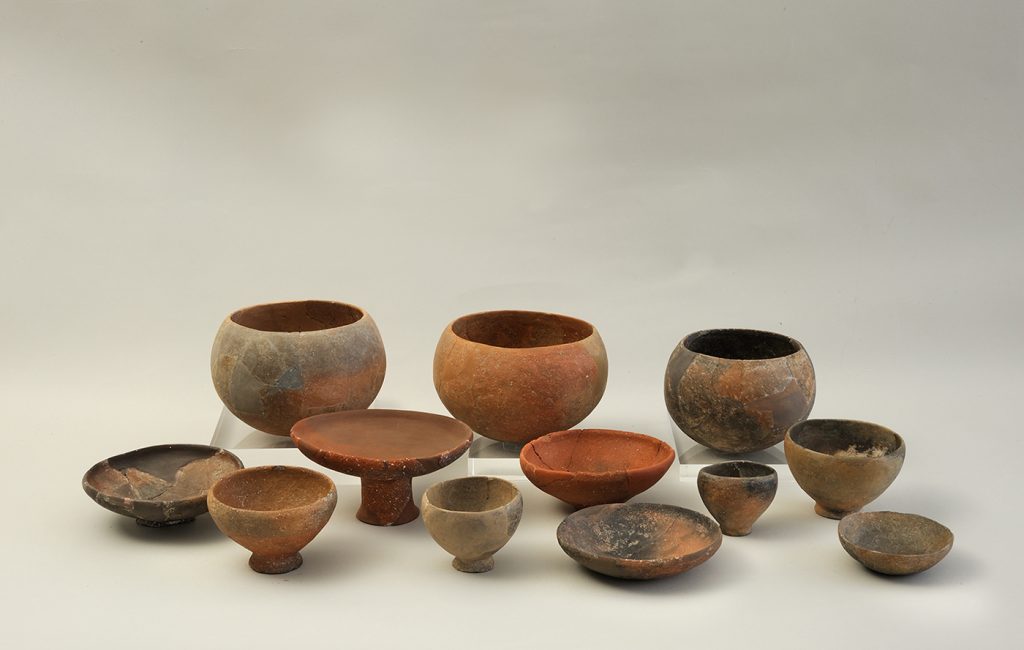
Skarkos, Early Cycladic II settlement: Local tableware (lower), Archaeological Museum of Ios (cyclades.culture.gov.gr)
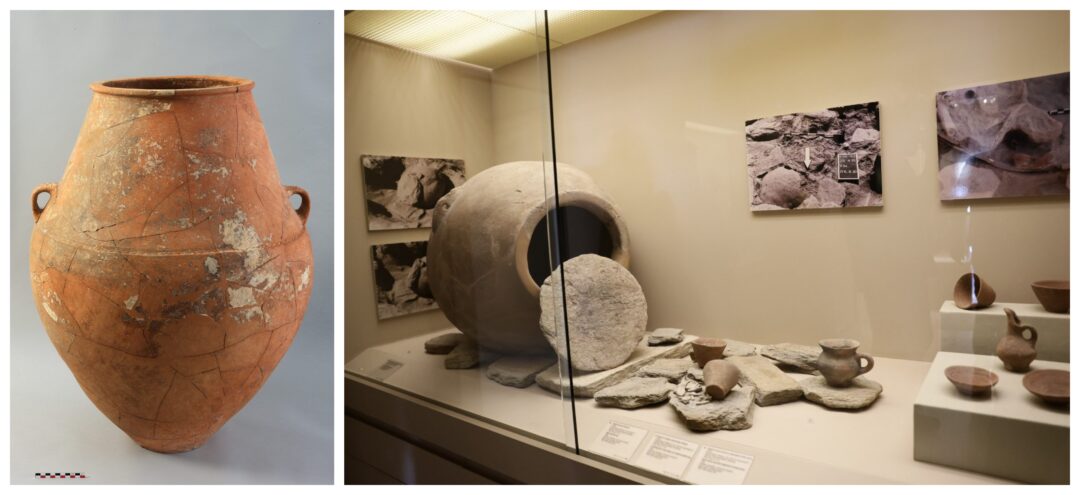
Skarkos, Early Cycladic II settlement: Local pithos (left), Presentation of the findings at the Archaeological Museum of Ios
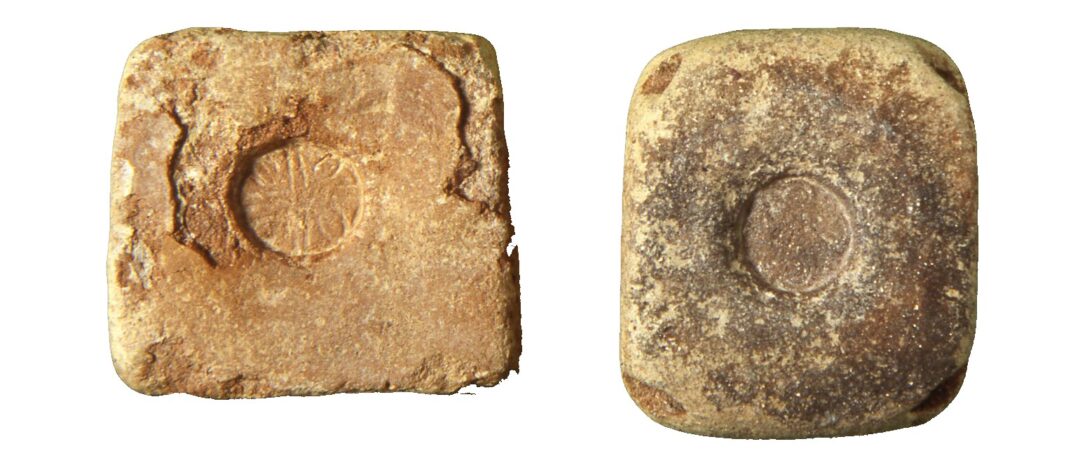
Skarkos , Early Cycladic II settlement: Stamped, clay, cube-shaped objects. The seals, the stamped vessels, and the many clay, cube-shaped, stamped objects—which were tied like tags to bags and containers and found inside the buildings—leave no doubt that sealing was a common practice at Skarkos. It seems that in certain cases, declaring ownership or personal identity was useful or necessary. (cyclades.culture.gov.gr)
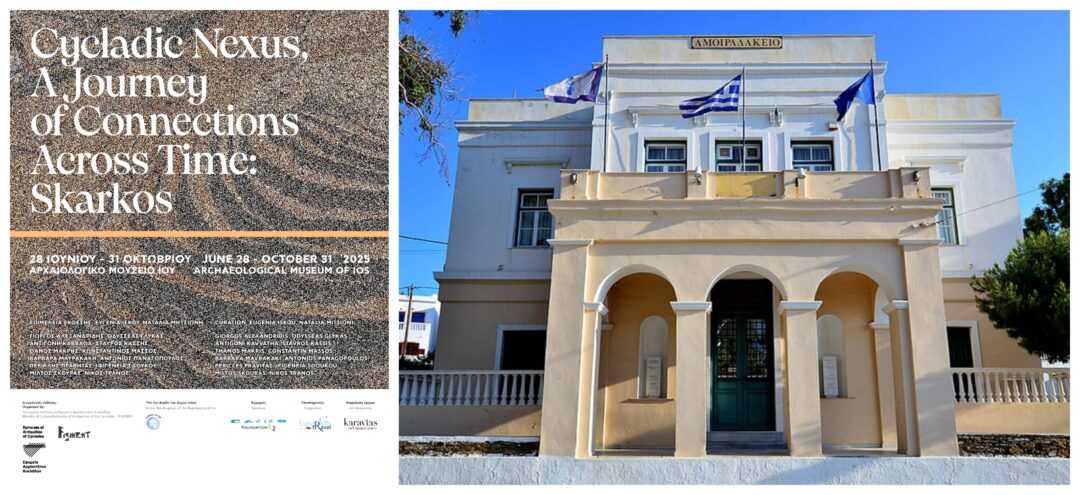
The Cyclades Ephorate of Antiquities, in collaboration with the Non-Profit Civil Company FIGMENT, presents contemporary artworks at the Archaeological Museum of Ios, fostering a creative dialogue with the museum’s exhibits. The temporary exhibition titled “Cycladic Nexus – A Journey of Connections Across Time: Skarkos” (June 28–October 31, 2025) bridges past and present through contemporary artistic expressions.
The exhibition draws inspiration from the prehistoric settlement of Skarkos and, by extension, the Cycladic civilization. Artists from diverse disciplines explore themes such as movement, communication, and connection through painting, sculpture, installations, embroidery, and digital prints. The human trace—whether presence or absence, journey or trauma—runs through the works, prompting reflections on collectivity and historical consciousness.
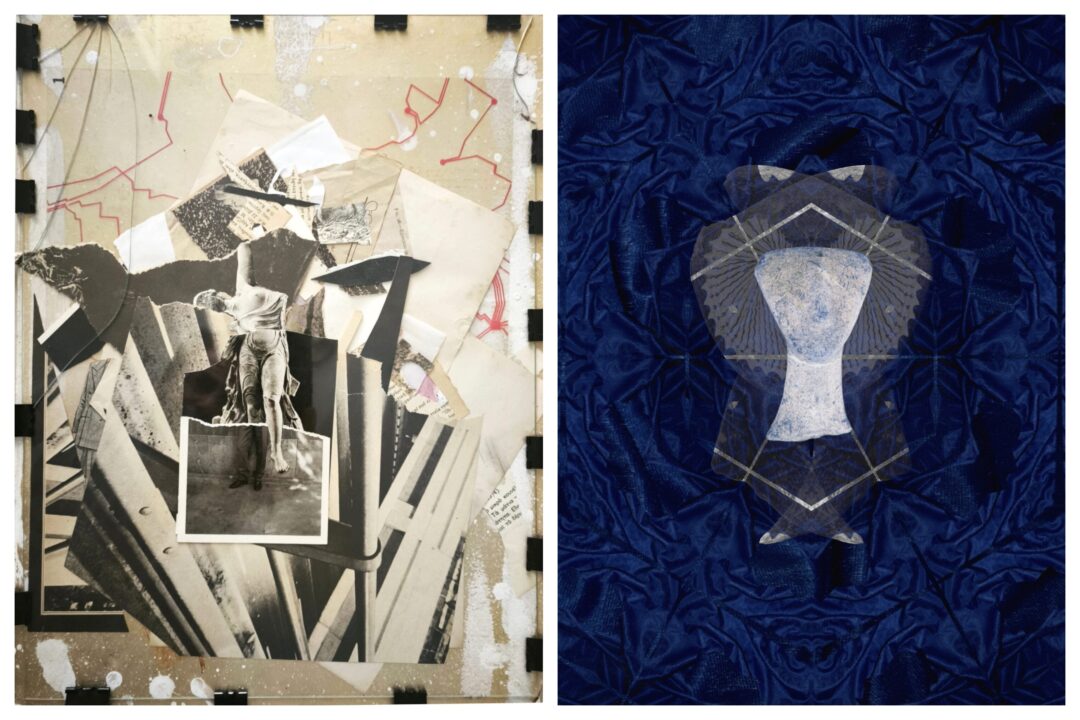

Stavros Kassis, Ephemera, objet trouvé papers, postcards, photos, cardboard, clips, glass, 31 x 42 cm (upper left), Thanos Makris, Ephemeral Exercises of Melancholia – After Skarkos VII, 2025, Digital print on acryluxe, 29.7 x 42 cm (upper right), Antigoni Kavvatha, Journey IV, 2018, arylics on mylar, 61 x 440 cm (lower)
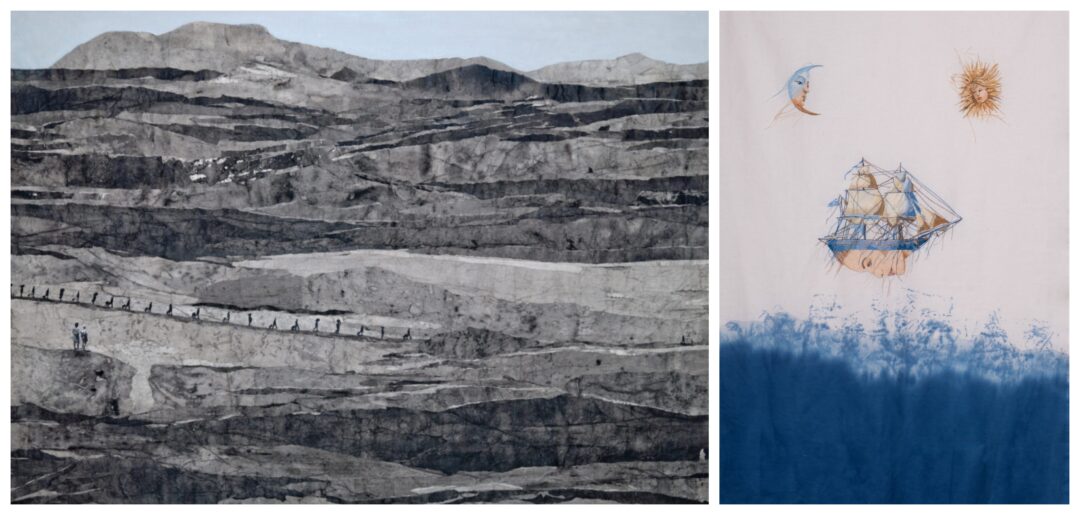
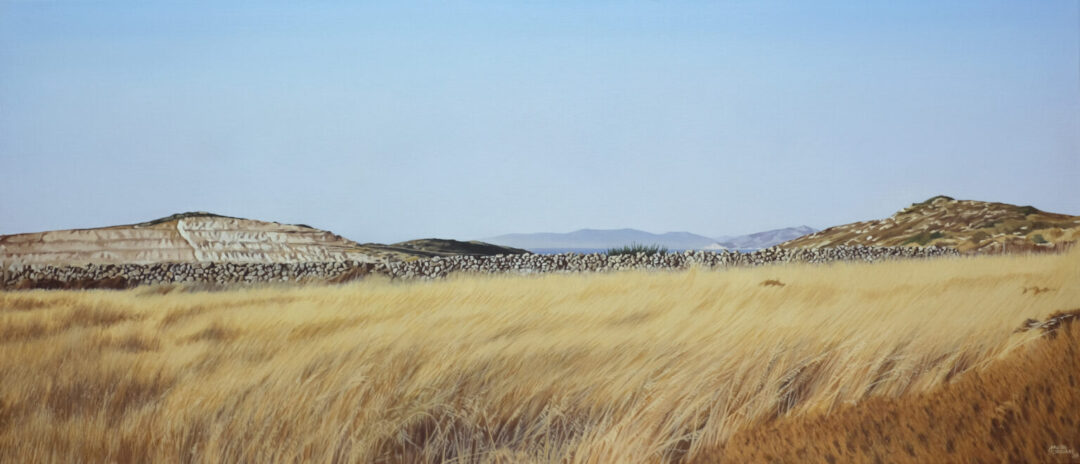
Constantin Massos, The Passage, 2016, mixed media on canvas, 100 x 140 cm (upper left), Ifigeneia Sdoukou, Sailing, 2023, hand-dyed and embroidered fabric, 100 x 65 cm (upper riglht), Miltos Skouras, Untitled, 2022, oil on canvas, 70 x 160 cm (lower)
The exhibition’s curators, Evgenia Iskou and Natalia Mitsioni, explain: “The exhibition is not merely a reference to cultural continuity. It is an artistic proposition that views history not as a static archive, but as a dynamic topography — a field of meaning that directly concerns us. In the encounter between the ancient and the contemporary, viewers are invited to reflect on movement, transition, exchange, and collectivity — not as abstract concepts, but as fundamental lived experiences shared by both the Early Cycladic inhabitants and the modern individual”.
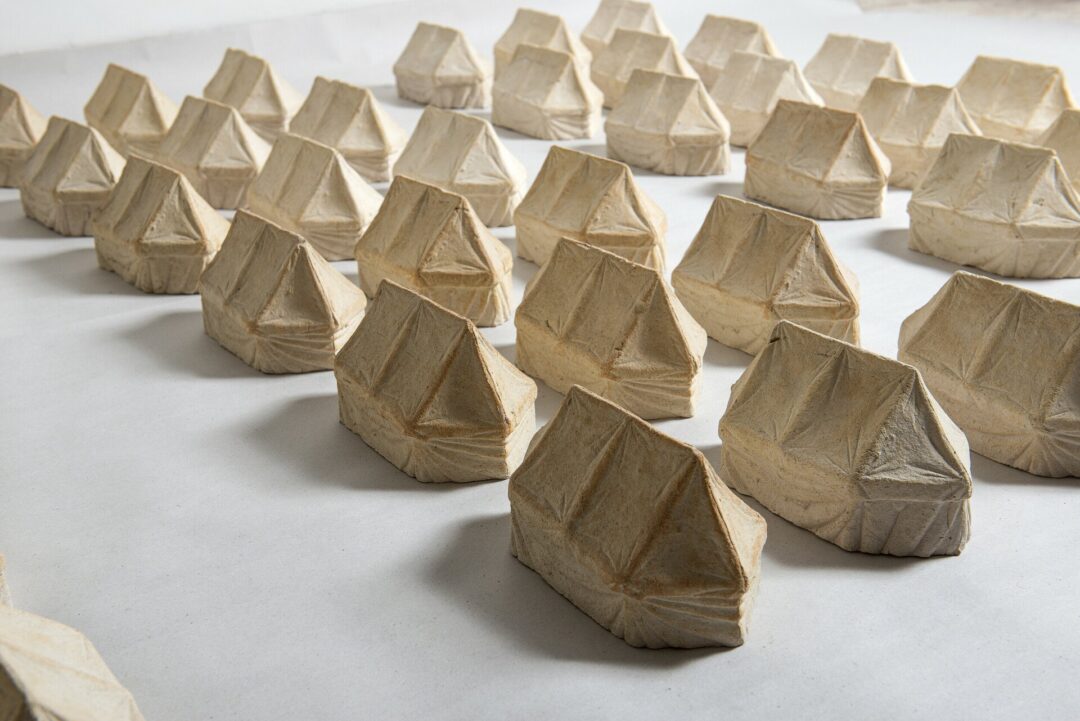
Giorgos Alexandridis, Accommodations, 2020, installation, stoneware clay, 21 x 12 x 11 cm (each)
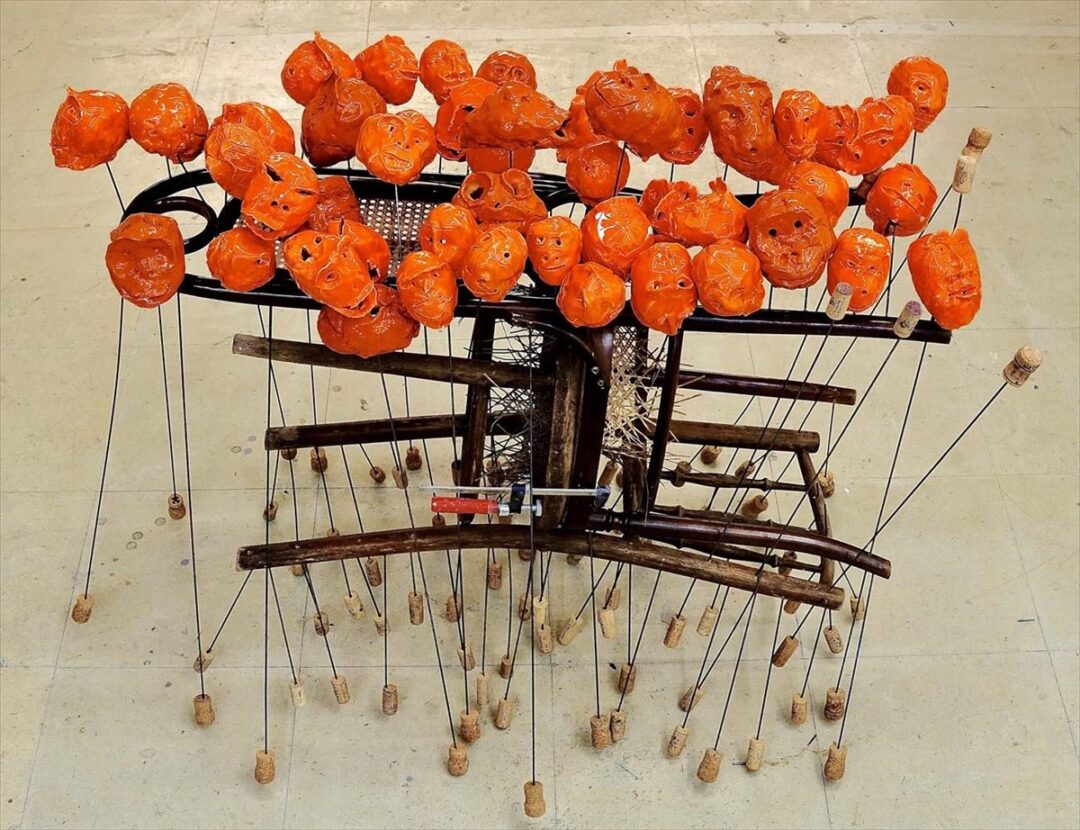
Nikos Tranos, Nausea (from the series terrain), 2017, 50 ceramic heads glazed in lifebuoy orange and double-fired at 1020°C, 2 Viennese chairs — domestic furniture salvaged from the streets of Athens, 150 corks from champagne and wine bottles, iron rods, 113 x 55 x 115 cm (Courtesy of Zoumboulakis Galleries)
Participating artists: Giorgos Alexandridis, Odysseas Glykas, Antigoni Kavvatha, Stavros Kassis, Thanos Makris, Konstantinos Massos, Varvara Mavrakaki, Antonios Panagopoulos, Periklis Pravitas, Ifigeneia Sdoukou, Miltos Skouras, Nikos Tranos.
The island of Ios is a charming Cycladic destination, famous among young visitors for its vibrant nightlife. According to ancient tradition, Ios was the burial place of Homer and also the homeland of his mother. The island’s name, Ios, derives from the ancient word “ion,” meaning flower, a reference to the abundant blossoms that once covered the island in antiquity. Ios is home to several sites of significant archaeological and historical value.
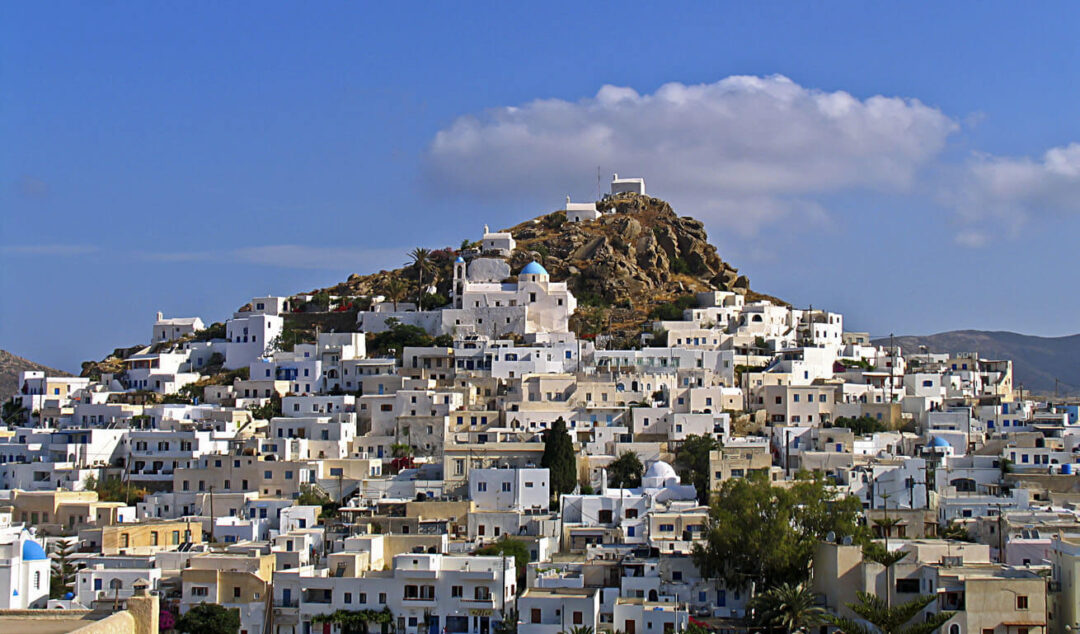
Chora lies very close to the harbor in Ormos and warmly welcomes travelers arriving on the island. Built on a hillside, its summit is crowned by the ruins of a medieval castle. Chora is one of the finest examples of a traditional village designed according to Cycladic architecture. Its snow-white houses, picturesque arcade-covered alleys (stiyadia), twelve windmills, and churches with arched belfries and light blue domes create a uniquely charming residential area. (visitgreece.gr)
The landscape of Ios is determined by the numerous churches and chapels that are scattered everywhere and are, as one would say, an integral part of the beauty of the island. The local tradition wants the churches of the island to be 365, one for each day of the year.(visitiosgreece.com/en/churches-and-monasteries/)
The Hiking Network of the Municipality of Ios is a network of short paths, which is addressed to visitors to the island who wish to get to know the natural and cultural environment of Ios.
Ios offers a plethora of lovely bays and beaches with golden sand and blue-green waters.
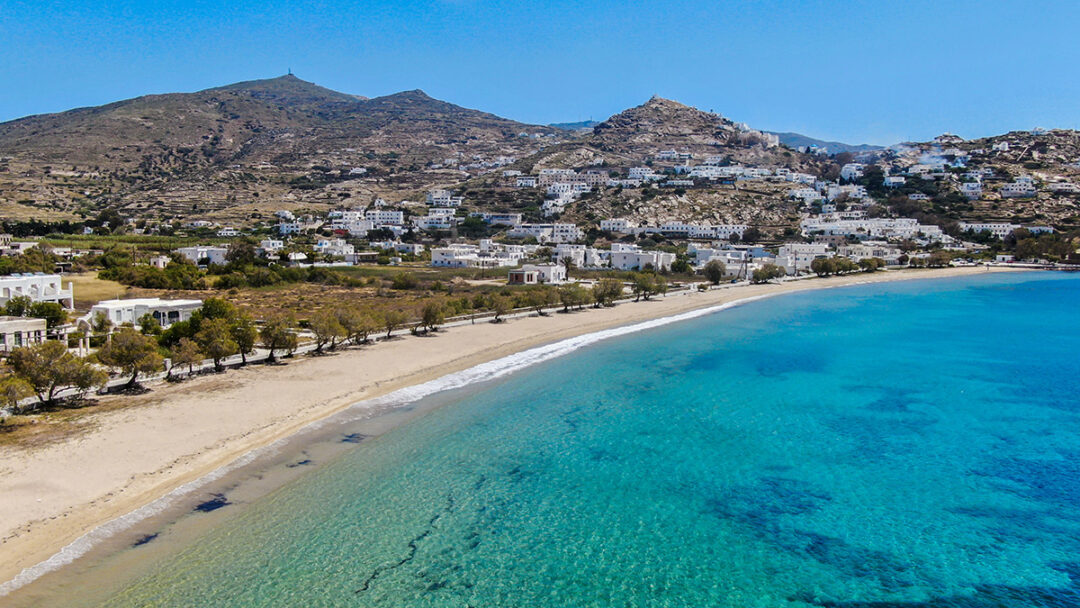
Gialos is the large beach with fine sand, next to the port. A part of it is organized but it also has many tamarisk trees that can offer their shade.
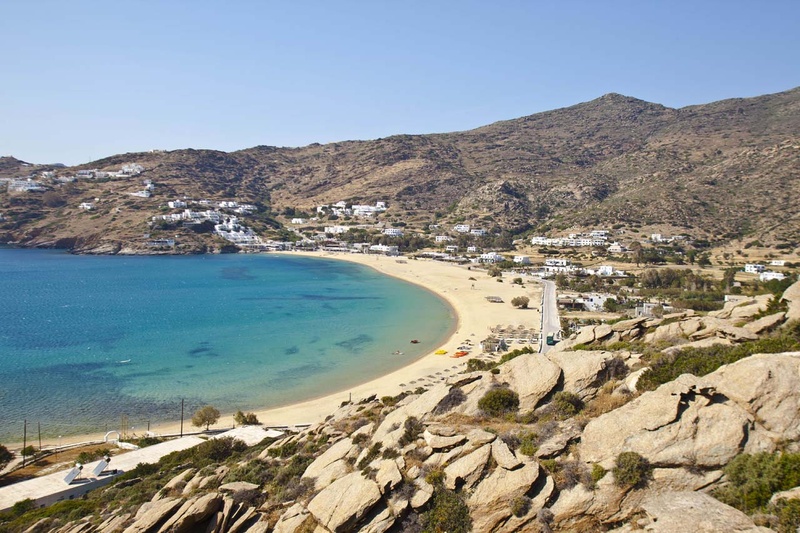
Mylopotas is the most organized and busy beach of the island. A beach with golden sand and clear blue waters south of Chora (3 km). Along the beach there are umbrellas, sunbeds and beach bars for all ages. (Source: aegeanislands.gr)
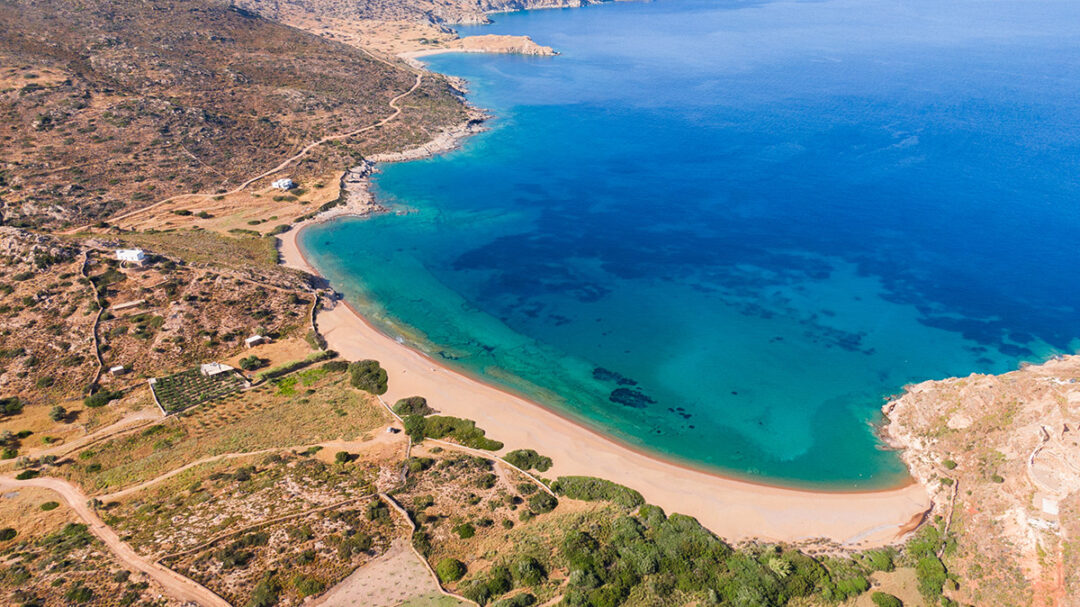
Tris Klissies, three wonderful windless beaches in the southern part of the island. Due to their protection from the winds, the port of the island was old. At the bottom of the sea, the visitor can see the remains of the old port.
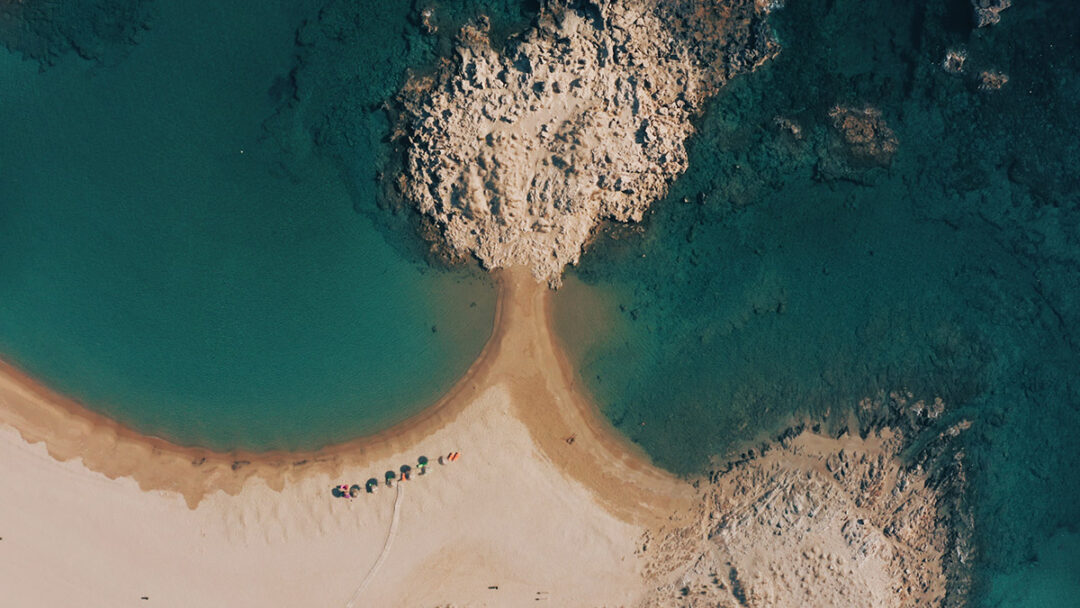
Manganari is a series of sandy coves that form at least three large beaches and numerous smaller, with easy access to the southern part of Ios. Its natural beauty is renowned not only on Ios but throughout the Cyclades. Manganari caters both to visitors seeking organized beaches with umbrellas, sunbeds, restaurants, and beach bars, and to those who prefer a quieter, more secluded beach experience.
(Source : https://visitiosgreece.com/en/)
Read also:
The Gaitis-Simossi Museum on Ios Island
I.A.
TAGS: ARCHAEOLOGY | ARTS | CYCLADIC | EXHIBITION | IOS | TOURISM

